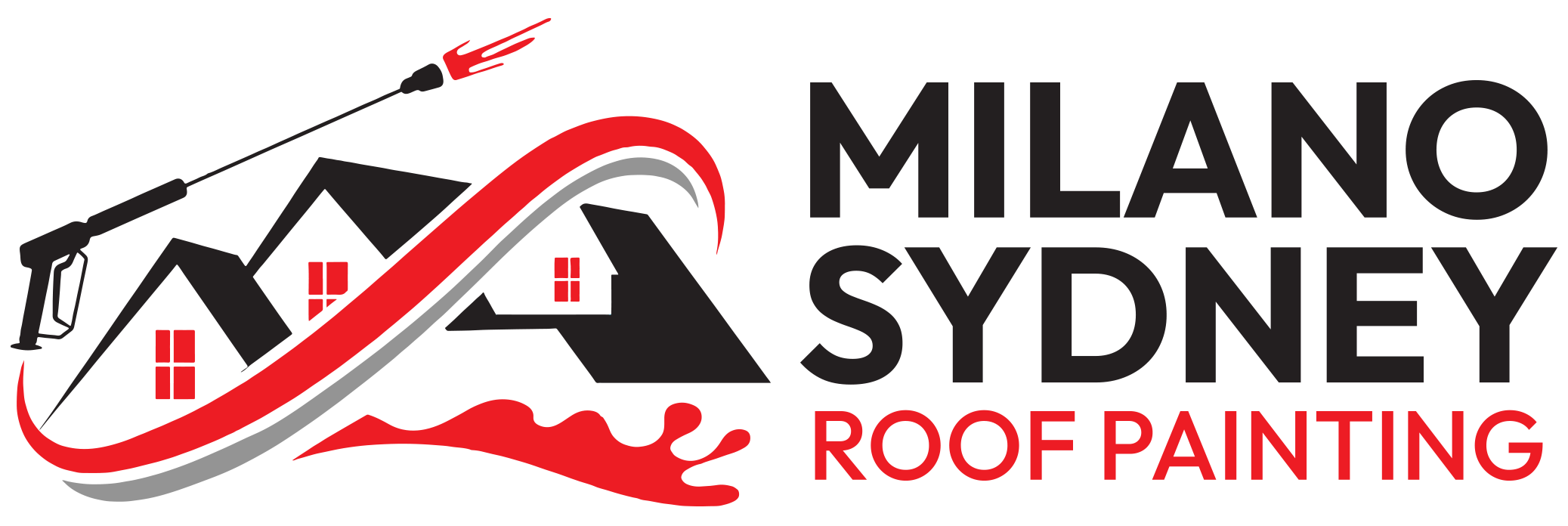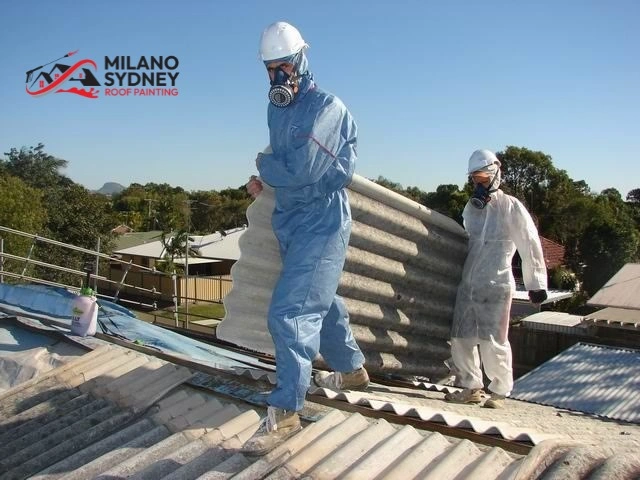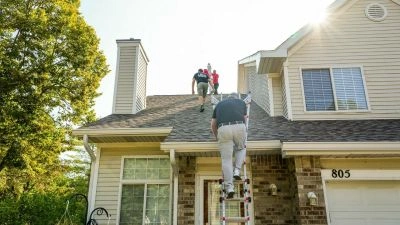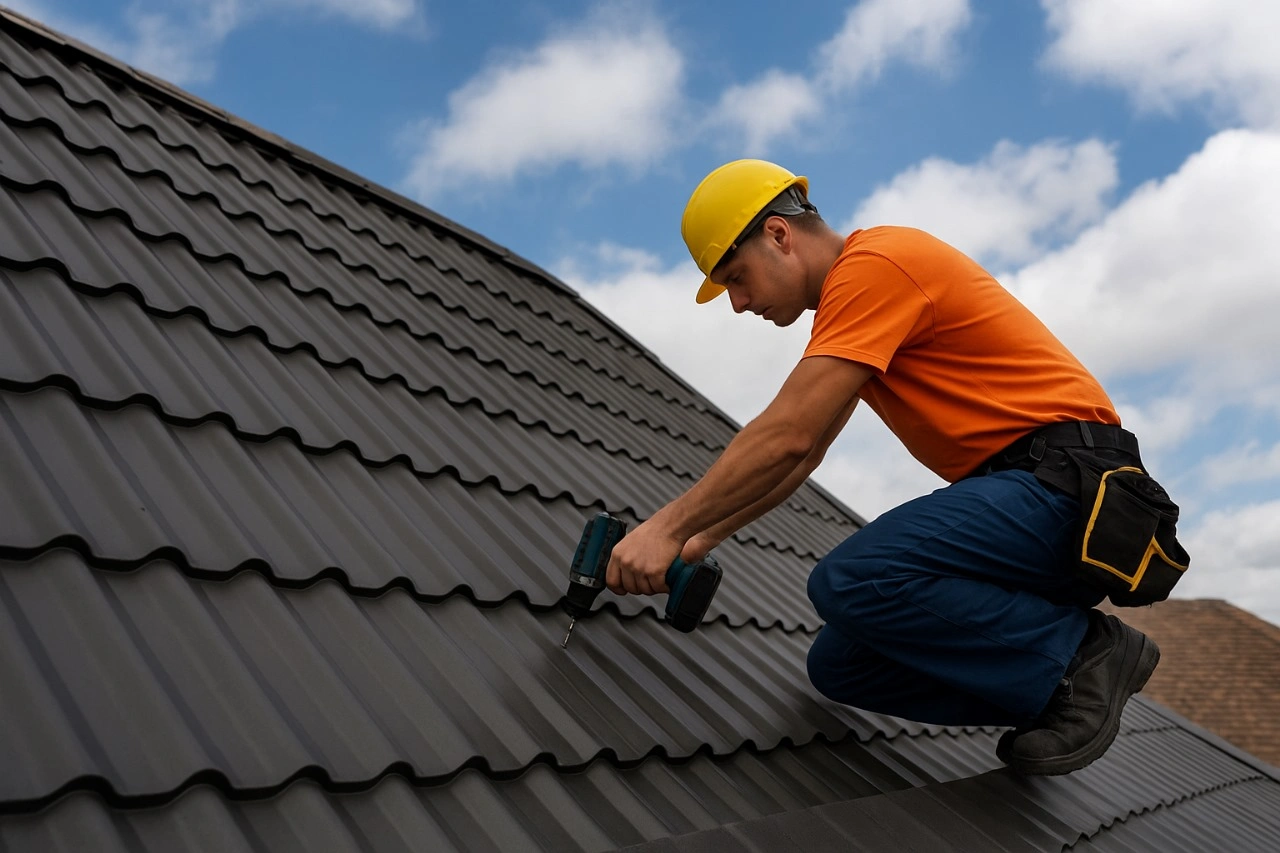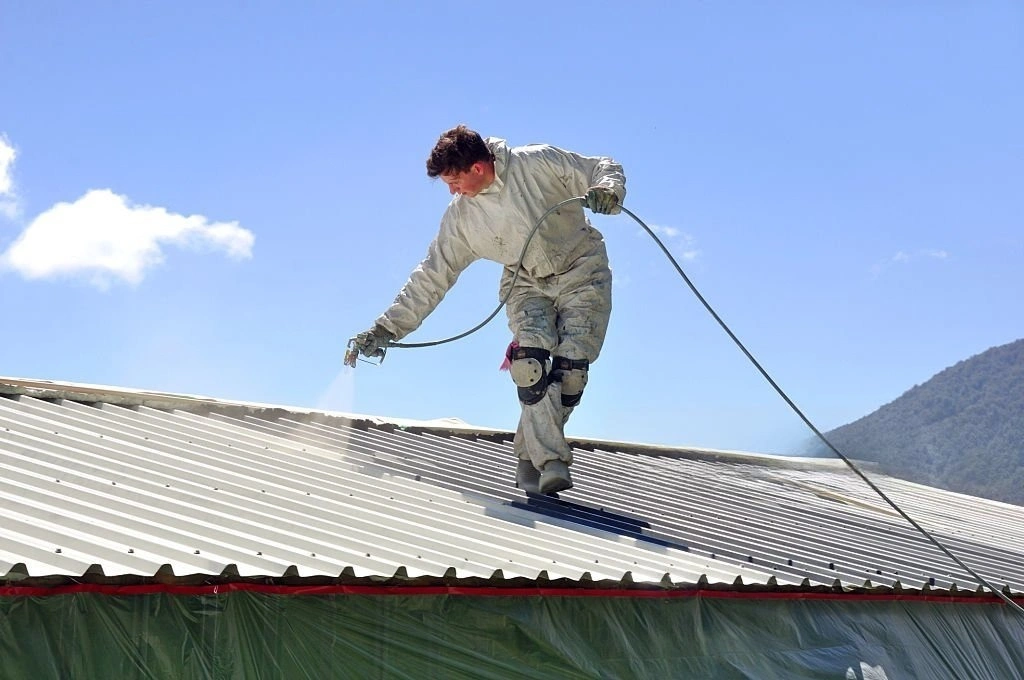Table of Contents
The Introduction of Asbestos in Australian Homes
The Rise of Asbestos Use in Australia
Common Locations of Asbestos in Australian Homes
Health Implications and Public Awareness
Regulatory Measures and the Ban
Timeline of Asbestos Use and Regulation in Australia (1920–2020)
Professional Roofing Services in Australia
The Introduction of Asbestos in Australian Homes
Asbestos use in Australian domestic building began from the first decades of the 20th century. Asbestos cement goods, commonly referred to as “fibro,” were common in the 1920s because they were inexpensive and durable. The goods were used thoroughly most frequently in roof coverings, wall claddings, and fences.
With the post-World War II housing boom, with inexpensive and rapid building materials in greater demand, Asbestos Use in Australia soared into the stratosphere. Houses constructed in the 1940s until the late 1980s had it commonplace to incorporate asbestos-containing products (ACMs) into the construction of most elements thereof, such as:
- Roofing sheets
- Wall panels
- Ceiling tiles
- Insulation material
- Vinyl floor tiles
Their widespread use was due to the fact that they were electric, chemical, and heat-resistant, qualities well suited to the climate and building conditions of the day in Australia.
The Rise of Asbestos Use in Australia
Australia was the world’s leading per capita consumer of asbestos. During the 1950s and 1970s, Asbestos Use Australia reached its peak with a variety of asbestos products being manufactured and utilized in Australia.
The large corporations, such as James Hardie Industries, were the largest producers and suppliers of asbestos-containing products. The products are not only utilized in houses but also in office buildings, shipyards, and factories.
Asbestos was also disseminated through its mining. Western Australia’s Wittenoom is renowned for the blue asbestos mining, which precipitated unsafe health effects on the workers there and the residents.
Common Locations of Asbestos in Australian Homes
| Area in Home | Common Asbestos-Containing Materials (ACMs) | Risks If Disturbed |
| Roofing | Corrugated asbestos cement sheets | Fiber release during replacement/repair |
| Exterior Walls | Flat/patterned fibro sheeting | Dangerous if drilled or broken |
| eilings | Textured coatings, ceiling tiles | Dust from crumbling materials |
| Flooring | Vinyl tiles, asbestos-backed linoleum | Fiber release when sanding/removing |
| Eaves and Gables | Asbestos cement panels | High risk if weathered or cracked |
| Bathrooms & Kitchens | Insulation in hot water pipes, behind tiles | Increased danger during renovations |
| Sheds and Garages | Roofing, walls, and insulation | Exposure due to aging/deterioration |
Health Implications and Public Awareness
Although the early health risks of asbestos existed, public awareness was rising only in the 1970s and in 1980s. Inhalable asbestos fibers were linked with severe diseases, including:
- Asbestosis
- Lung cancer
- Mesothelioma
These diseases have latent periods lasting decades, and their appearance is uncertain for decades after exposure. The increasing incidence caused public alarm and demands for additional controls on the handling of asbestos use in Australia.
Regulatory Measures and the Ban
As additional health problems, the Australian government implemented a series of regulatory controls to limit the use of asbestos:
- 1980s: Slow restriction of asbestos use in building products.
- 1989: Ban on the use of asbestos in building products.
- 2003: Complete prohibition across the nation on the selling, importing, and manufacturing of all forms of asbestos and asbestos-containing material.
These measures were an important step toward halting the risk of Asbestos Use in Australia.
Legacy and Ongoing Challenges
Despite the prohibition, Asbestos Use in Australia. Asbestos material still exists in houses and structures built before the 1990s. Demolitions, upgrading, and aging may expose such material to exposure to asbestos to yield carcinogenic fibres.
The issue is the detection and eradication of asbestos in structures without harm.
Precautions must be exercised by the residents and consultants when ACMs are assumed to be met.
Timeline of Asbestos Use and Regulation in Australia (1920–2020)
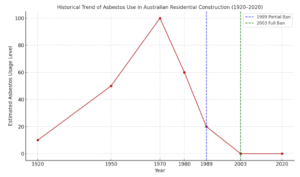
Identifying Asbestos in Homes
It requires keen sight to discover whether a house contains asbestos, and in most instances, professional inspections are required. Some of the places where signs of asbestos can be discovered include:
- Roofs: Asbestos cement roof sheets.
- Walls: Textured or flat ceiling linings.
- Ceilings: Tiles or textured ceiling paint.
- Flooring: Backing material or vinyl tiles.
- Insulation: Near heaters, pipes, or in wall cavities.
Do not handle suspected material and engage certified asbestos removalists to sample and remove.
Safe Practices for Homeowners
Homeowners, particularly those with renovation plans, should practice safely:
Assessment: Test the house for asbestos before any work is done by qualified professionals.
- Avoid Disturbance: Do not sand, drill, or cut suspected material.
- Professional Removal: Employ suitably licensed removalists to perform any remedial work necessary.
- Waste Disposal: Dispose of asbestos waste at approved facilities.
Following these processes, homeowners minimize health risks from Asbestos use in Australia.
Professional Roofing Services in Australia
Fixing and maintenance of aged home roofs are crucial and specialized works, especially the handling of potential asbestos-contaminated material. Professional services available to use to undertake such requirements include:
Roof Cleaning Sydney: Specialist roof cleaners without disturbing asbestos materials at risk.
Roof Tiler Sydney: Specializing in resurfacing and repairing tiled roofs with care against asbestos risks.
Sydney Roof Repair Discount: Discounted roof repair solutions with a focus on safety and adherence.
Roof Painters Brisbane: Providing painting solutions to seal and coat the roof with asbestos fiber emission under control.
Roof Painting Blue Mountains: Provides Blue Mountains-specific weather-engineered painting solutions.
Roof Tiling Sydney: Provides complete tiling solutions, which provide security and safety.
Re-Roofing Sydney: Offers complete roof replacement, which takes out existing substances and replaces them with new, safe ones.
Roof Leak Detection Sydney: Uses better techniques to find and fix leaks without interfering with unsafe material.
Gutter Repair Sydney: Offers gutters that function as they should so there is no water damage or risk of asbestos contamination.
Downpipe Repair Sydney: Fixes and re-installs downpipes that function to safely carry water away from buildings.
That they apply them is an assurance of roof work to be done safely, to the standards of Asbestos use in Australia.
Call to Action: Protect Your Home—Act Now!
Asbestos Use in Australia is of the past, but danger is certainly here today. If your house was built before the 1990s, don’t gamble with your family’s health. Whether you are getting ready to renovate, require roof repairs, or simply wish to have a clear conscience tonight, today is the day.
Schedule a Professional Asbestos Inspection Today:
- Asbestos detection and removal by trained professionals safely
- Fully Australian law compliant
- Roof tiling, re-roofing, and cleaning service delivered
- Availability in all the major cities, like Sydney and Brisbane
Book online or call now for a match with a top-rated roofer that Sydney residents rely on.
Conclusion
The history of Asbestos Use in Australia. It is a story of caution in the face of unintended consequences of the unbridled pace of industrialization. Asbestos was a titan of Australia’s infrastructure development initiative, but its history still brings fear about safety and health.
Awareness, education, and professional action are required in acquiring safe handling of the risks involved by virtue of the fact that there is asbestos within buildings. Owners can shield from asbestos-induced harm and future generations and eschew asbestos-induced damage by taking things into their own hands.
FAQs
Q1: Since when has the use of asbestos during Australian residential building construction been uninterrupted?
A: Asbestos was introduced into Australian domestic building at some time in the early part of the 20th century, and during the 1920s usage accelerated once asbestos cement products had been formed.
Q2: Is it safe to reside in an asbestos dwelling?
A: Provided that the asbestos products are undisturbed and are in full integrity. But weathering or repair will lead to the emission of hazardous fibres, so care needs to be taken.
Q3: How do I know if my home has asbestos?
A: Homes built before the 1990s will have asbestos. The only positive test will be with professional tests.
Q4: Can I do it myself?
A: It is strongly advised that trained personnel perform the asbestos removal for safety and regulatory purposes.
